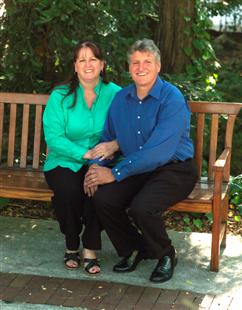Business 101, Jamie Oliver and why I like my ’03 Accord
Recently, there has been a lot of dialogue on a national level on the costs of school lunch. Many reports have focused on the impact of the current economic climate, but some are blaming the “privitization of school lunch” for the rise in processed foods in our schools. However, not all privatized school lunch companies are created equal.
The school lunch privatization discussion centers on companies like Sodexho, Aramark, and Chartwells, which provide “Management Services” to school districts for a fee to maintain their foodservice operations. Other “privatized” foodservice options for schools are companies like Choicelunch, which build and staff the kitchens that prepare the meals for schools.
 My partners and I have built a viable, sustainable business which now employs over 130 Californians serving school lunch to over 220 schools. What did “privatization” mean in the early stages of our company? It didn’t mean huge checks from manufacturers for slinging their processed crap. No, it meant all of us living with my parents and sacrificing our middle and late 20’s to build a real business. While our friends held down well-paying jobs in downtown Chicago, San Francisco, and New York, and stayed out late enjoying urban nightlife, we were getting up at 4am to throw on hairnets and learn the business of school food.
My partners and I have built a viable, sustainable business which now employs over 130 Californians serving school lunch to over 220 schools. What did “privatization” mean in the early stages of our company? It didn’t mean huge checks from manufacturers for slinging their processed crap. No, it meant all of us living with my parents and sacrificing our middle and late 20’s to build a real business. While our friends held down well-paying jobs in downtown Chicago, San Francisco, and New York, and stayed out late enjoying urban nightlife, we were getting up at 4am to throw on hairnets and learn the business of school food.Yes, we are technically a for-profit private company. Being a closely held private company allows us to be beholden only to ourselves, and to be able to make decisions in the best interest of our customers and not Wall Street investors. While the word “profit” has been vilified and carries a negative connotation in school food and in society at large (particularly with the Occupy movement), it is important to understand what profit means, particularly as it pertains to a small business.
Profit is, quite simply, Total Revenue â Total Expenses. In lay terms, it is what is left over you pay all of the bills associated with providing a service or good from the money that you collected for providing the same service or good. What happens when the money spent is more than the money collected? In the public sector, we call that a “deficit.” In a privately held, self-funded small business, we call it “bankruptcy.”
There is also a lack of understanding of where profits go. There are two things you can do with profits. The first, dividends, is what everyone thinks of when they think “profits.” It is money paid out to shareholders to compensate for the risk associated with keeping their equity in the company. As shareholders of our company, all of my partners and I are required to sign personal guarantees with our lenders. We don’t have the luxury of the state or the county or the school district saying “they’re good for it.” We have a signature which says “if I fail at what I do, you can not only come after my company, you can come after me and my family for every penny I have, and everything I am worth.” There is TREMENDOUS risk associated with operating a “for-profit” business, and someone has to shoulder that. This country was founded on small business doing just that: risking everything to move forward and innovate.
The more unknown use of profits is what’s called “retained earnings.” Retained earnings are shareholders saying “I know there were profits earned, but I want to keep the money in the business so we can continue to grow and further our mission.” Keep in mind, you still pay INCOME TAXES on retained earnings as if they were paid out as dividends, but the money stays in the business. (Which is something I believe needs to be changed if we want to further job growth in small businessesâ¦)
 I am incredibly passionate about our business and the mission of feeding kids real food that they enjoy. I am one of those people that love what they do because it makes a difference in people’s lives, and has meaning far beyond providing a paycheck. As a father of a 3 year-old daughter and 15-month old twin boys, I also have a personal stake in changing our food culture for the benefit of my own children. I hope to someday tell my kids the story about how my personal sacrifice and hard work not only changed school food for the better, but also allowed me to provide a good life for my family and make a living through building a business that is of value to them and to the community at-large by creating jobs and providing a service that helps feed kids well and makes school lunch something parents can rely on and not be concerned with.
I am incredibly passionate about our business and the mission of feeding kids real food that they enjoy. I am one of those people that love what they do because it makes a difference in people’s lives, and has meaning far beyond providing a paycheck. As a father of a 3 year-old daughter and 15-month old twin boys, I also have a personal stake in changing our food culture for the benefit of my own children. I hope to someday tell my kids the story about how my personal sacrifice and hard work not only changed school food for the better, but also allowed me to provide a good life for my family and make a living through building a business that is of value to them and to the community at-large by creating jobs and providing a service that helps feed kids well and makes school lunch something parents can rely on and not be concerned with.Most rhetoric and reporting today is all about creating an “us vs. them”. A good guy and a bad guy. The 99% vs the 1%. Public vs Private. For-profit vs Non-profit. Republicans vs Democrats. You get the idea. While this style of reporting frees the story-teller from having to describe any nuance in the complexity of the issue, we need look no further than the polarization of our political system to understand how this level of simplified framing of an issue runs counter to solving social problems and moving our country forward. Painting all “privatized school food companies” with the same brush is a dangerous proposition that ignores the contributions of some because of the sins of many.






